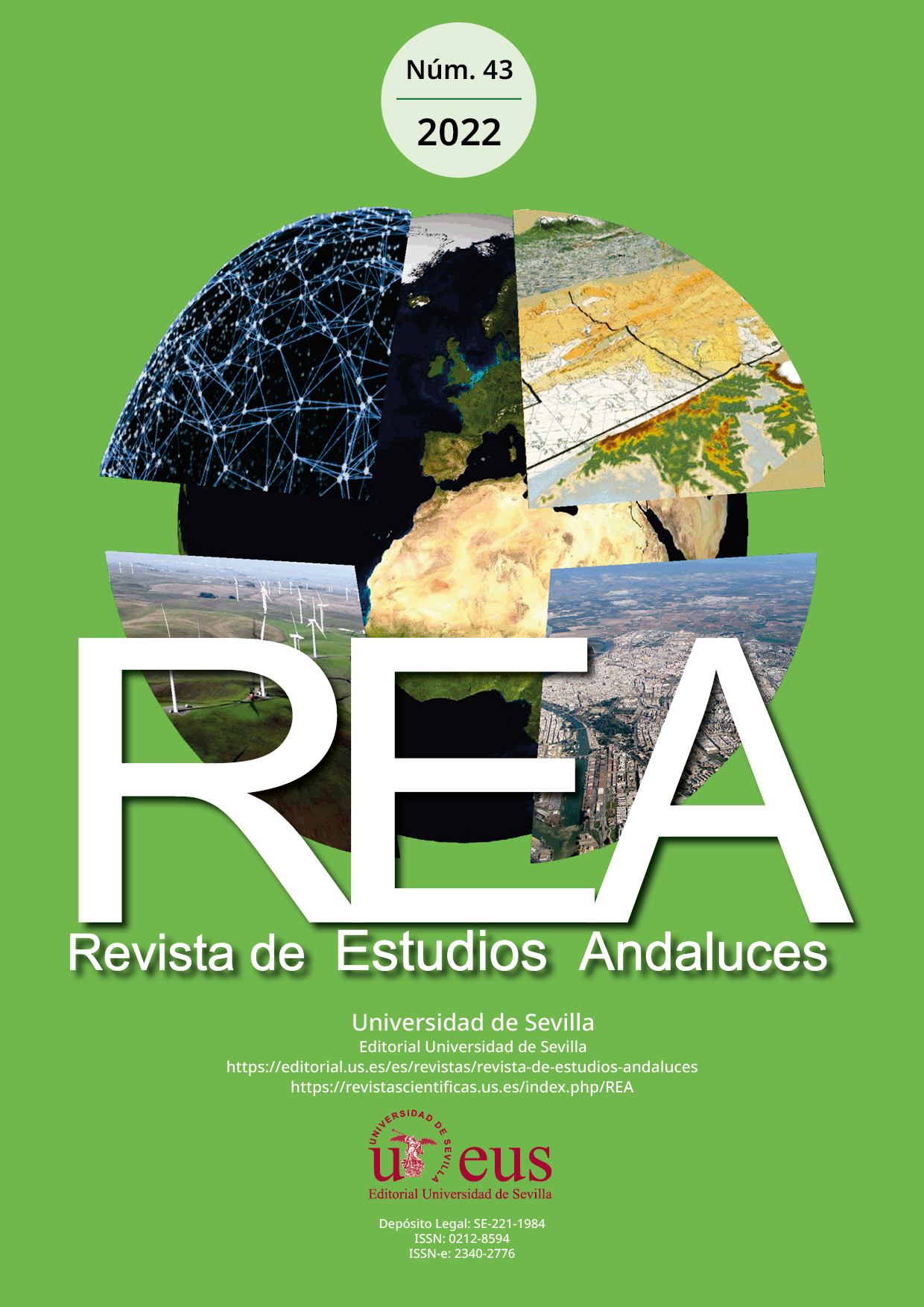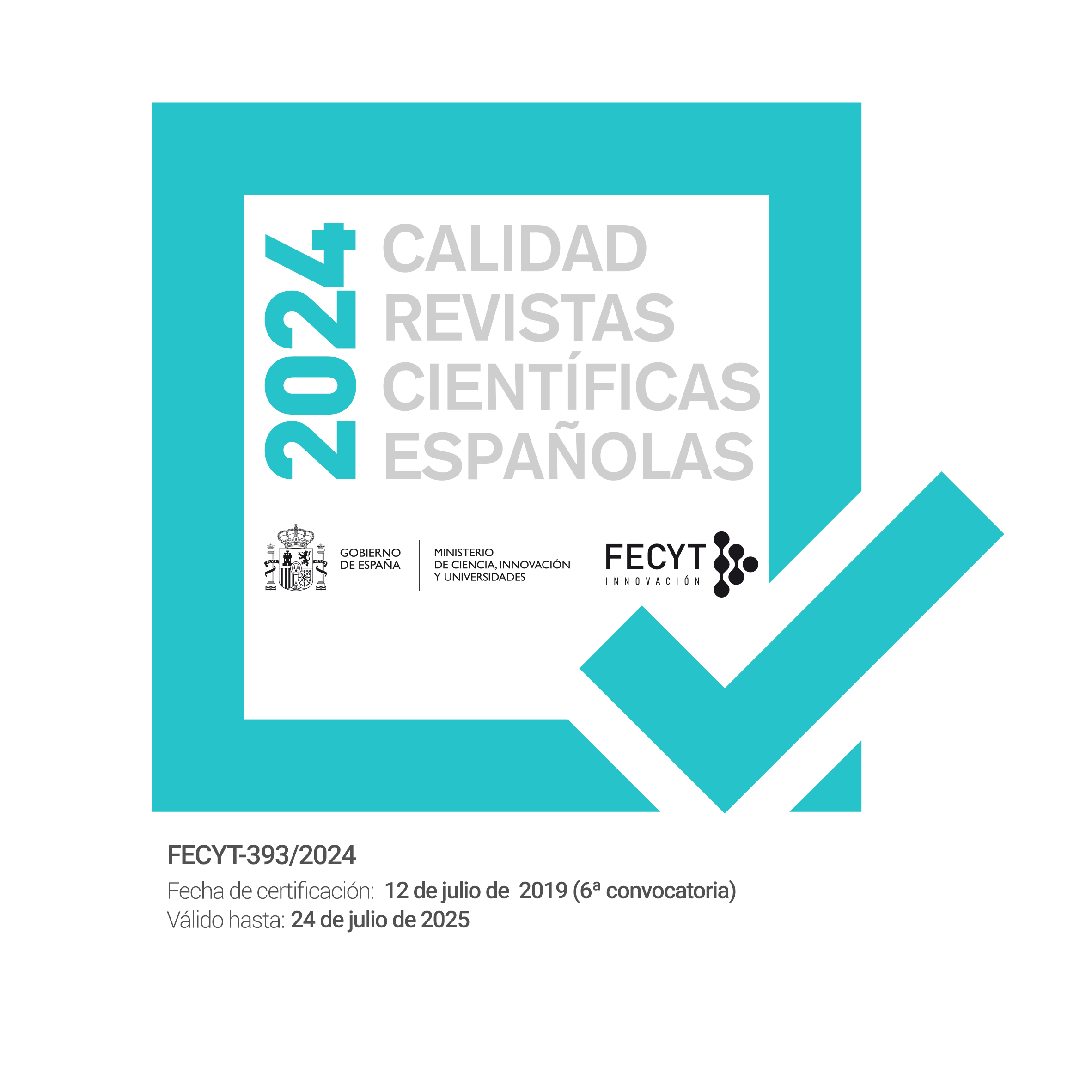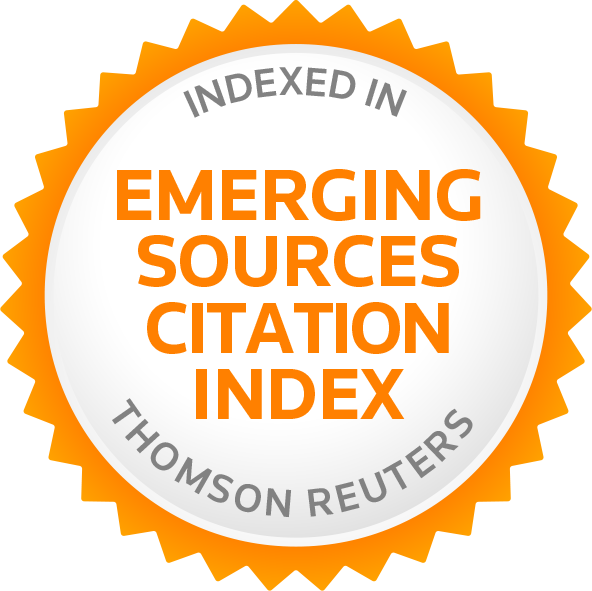Does a visit to a blue-green space evoke positive feelings? Blue and green spaces survey in Shkodra’ Lake, Albania
DOI:
https://doi.org/10.12795/rea.2022.i43.05Palabras clave:
Espacio azul, Espacio verde, Planificación urbana, salud, Estado de ánimo, BienestarResumen
Las personas que viven en zonas urbanas se enfrentan a varios retos para mejorar su salud y bienestar.
El propósito de esta investigación es explorar más a fondo cómo el uso de los espacios azules y verdes urbanos está relacionado con el estado de ánimo de las personas cuando visitan estos espacios. Para ello se realizó un estudio transversal de una muestra de población adulta en Albania de entre 16 y 74 años mediante una encuesta en línea a través de la plataforma Google Form entre abril y mayo de 2021. El cuestionario incluía preguntas relacionadas con las características socioeconómicas, los espacios verdes y azules urbanos, e información sobre los sentimientos autodeclarados. Tras el proceso de validación y depuración, se obtuvo una muestra representativa (nivel de confianza del 95%) de 530 encuestados. También, se utilizaron estadísticas descriptivas para analizar indicadores como: (1) las características sociodemográficas; (2) la frecuencia de las visitas en espacios azules y verdes en las últimas 4 semanas; (3) el tiempo empleado durante la visita; (4) las actividades realizadas durante la visita; (5) el tipo de acompañamiento; (6) el motivo de no visitar EVA y la calidad de EVA.
Descargas
Citas
American Psychological Association. (2005). Toward an urban psychology: Research, action, and policy. Washington, DC: Author.
Astell-Burt, T., Feng, X. & Kolt, G. S. (2013). Mental health benefits of neighbourhood green space are stronger among physically active adults in middle-to-older age: evidence from 260,061 Australians. Preventive medicine, 57(5), 601-606. https://doi.org/10.1016/j.ypmed.2013.08.017
Astell-Burt, T., Feng, X. & Kolt, G. S. (2014). Is neighborhood green space associated with a lower risk of type 2 diabetes? Evidence from 267,072 Australians. Diabetes care, 37(1), 197-201. https://doi.org/10.2337/dc13-1325
Bailey, A. W., Anderson, M. & Cox, G. (2021). The Cortex in Context: Investigating the Influence of Activity and Space on Psychological Well-Being. Leisure Sciences, 1-18. https://doi.org/10.1080/01490400.2021.1889421
Barton, J. & Pretty, J. (2010). What is the best dose of nature and green exercise for improving mental health? A multi-study analysis. Environmental science & technology, 44(10), 3947-3955. https://doi.org/10.1021/es903183r
Bauer, U. E., Briss, P. A., Goodman, R. A. & Bowman, B. A. (2014). Prevention of chronic disease in the 21st century: elimination of the leading preventable causes of premature death and disability in the USA. The Lancet, 384(9937), 45-52. https://doi.org/10.1016/S0140-6736(14)60648-6
Berman, M. G., Kross, E., Krpan, K. M., Askren, M. K., Burson, A., Deldin, P. J., Kaplan, S., Sherdell, L., Gotlib, I. H. & Jonides, J. (2012). Interacting with nature improves cognition and affect for individuals with depression. Journal of affective disorders, 140(3), 300-305. https://doi.org/10.1016/j.jad.2012.03.012
Braçe, O., Garrido-Cumbrera, M., Foley, R., Correa-Fernández, J., Suárez-Cáceres, G. & Lafortezza, R. (2020). Is a View of Green Spaces from Home Associated with a Lower Risk of Anxiety and Depression? International Journal of Environmental Research and Public Health, 17(19), 7014. https://doi.org/10.3390/ijerph17197014
Bratman, G. N., Hamilton, J. P. & Daily, G. C. (2012). The impacts of nature experience on human cognitive function and mental health. Annals of the New York academy of sciences, 1249(1), 118-136. https://doi.org/10.1111/j.1749-6632.2011.06400.x
Brunekreef, B. & Holgate, S. T. (2002). Air pollution and health. The lancet, 360(9341), 1233-1242. https://doi.org/10.1016/S0140-6736(02)11274-8
Chen, Y. & Yuan, Y. (2020). The neighborhood effect of exposure to blue space on elderly individuals’ mental health: A case study in Guangzhou, China. Health & Place, 63, 102348. https://doi.org/10.1016/j.healthplace.2020.102348
Cohen, S., Janicki-Deverts, D. & Miller, G. E. (2007). Psychological stress and disease. Jama, 298(14), 1685-1687. https://doi.org/10.1001/jama.298.14.1685
Costanza, R., De Groot, R., Braat, L., Kubiszewski, I., Fioramonti, L., Sutton, P.,... & Grasso, M. (2017). Twenty years of ecosystem services: how far have we come and how far do we still need to go?. Ecosystem services, 28, 1-16. https://doi.org/10.1016/j.ecoser.2017.09.008
Dadvand, P., Sunyer, J., Basagana, X., Ballester, F., Lertxundi, A., Fernandez-Somoano, A.,... & Nieuwenhuijsen, M. J. (2012). Surrounding greenness and pregnancy outcomes in four Spanish birth cohorts. Environmental health perspectives, 120(10), 1481-1487. https://doi.org/10.1289/ehp.1205244
Darwall, W., Carrizo, S., Numa, C., Barrios, V., Freyhof, J. & Smith, K. (2014). Freshwater Key Biodiversity Areas in the Mediterranean Basin Hotspot: Informing species conservation and development planning in freshwater ecosystems. IUCN, Cambridge. https://doi.org/10.2305/IUCN.CH.2014.SSC-OP.52.en
Daykin, N., Mansfield, L., Meads, C., Julier, G., Tomlinson, A., Payne, A.,... & Victor, C. (2018). What works for wellbeing? A systematic review of wellbeing outcomes for music and singing in adults. Perspectives in public health, 138(1), 39-46. https://doi.org/10.1177/1757913917740391
De Bell, S., Graham, H., Jarvis, S., & White, P. (2017). The importance of nature in mediating social and psychological benefits associated with visits to freshwater blue space. Landscape and Urban Planning, 167, 118-127. https://doi.org/10.1016/j.landurbplan.2017.06.003
De Vries, S., Verheij, R. A., Groenewegen, P. P. & Spreeuwenberg, P. (2003). Natural environments—healthy environments? An exploratory analysis of the relationship between greenspace and health. Environment and planning A, 35(10), 1717-1731. https://doi.org/10.1068/a35111
Demoury, C., Thierry, B., Richard, H., Sigler, B., Kestens, Y. & Parent, M. E. (2017). Residential greenness and risk of prostate cancer: A case-control study in Montreal, Canada. Environment international, 98, 129-136. https://doi.org/10.1016/j.envint.2016.10.024
Dhora, D. (2005). Liqeni i Shkodres. Univ. Shkodra ‘Luigj Gurakuqi’, Shkodra, 1-252.
Dye, C. (2008). Health and urban living. Science, 319(5864), 766-769. https://doi.org/10.1126/science.1150198
Edwards, P. & Tsouros, A. D. (2006). Promoting physical activity and active living in urban environments: the role of local governments. WHO Regional Office Europe.
Ewing, R. (2005). Can the physical environment determine physical activity levels? Exercise and sport sciences reviews, 33(2), 69-75. https://doi.org/10.1097/00003677-200504000-00003
Finger, M. (1994). From knowledge to action? Exploring the relationships between environmental experiences, learning, and behavior. Journal of social issues, 50(3), 141-160. https://doi.org/10.1111/j.1540-4560.1994.tb02424.x
Finlay, J., Franke, T., McKay, H. & Sims-Gould, J. (2015). Therapeutic landscapes and wellbeing in later life: Impacts of blue and green spaces for older adults. Health & place, 34, 97-106. https://doi.org/10.1016/j.healthplace.2015.05.001
Foley, R. (2017). Swimming as an accretive practice in healthy blue space. Emotion, Space and Society, 22, 43-51. https://doi.org/10.1016/j.emospa.2016.12.001
Galea, S. & Vlahov, D. (2005). Urban health: evidence, challenges, and directions. Annu. Rev. Public Health, 26, 341-365. https://doi.org/10.1146/annurev.publhealth.26.021304.144708
Gascon, M., Triguero-Mas, M., Martínez, D., Dadvand, P., Forns, J., Plasència, A. & Nieuwenhuijsen, M. J. (2015). Mental health benefits of long-term exposure to residential green and blue spaces: a systematic review. International journal of environmental research and public health, 12(4), 4354-4379. https://doi.org/10.3390/ijerph120404354
Gascon, M., Triguero-Mas, M., Martínez, D., Dadvand, P., Rojas-Rueda, D., Plasència, A. & Nieuwenhuijsen, M. J. (2016). Residential green spaces and mortality: a systematic review. Environment international, 86, 60-67. https://doi.org/10.1016/j.envint.2015.10.013
Gascon, M., Zijlema, W., Vert, C., White, M. P. & Nieuwenhuijsen, M. J. (2017). Outdoor blue spaces, human health and well-being: A systematic review of quantitative studies. International journal of hygiene and environmental health, 220(8), 1207-1221. https://doi.org/10.1016/j.ijheh.2017.08.004
Godfrey, R. & Julien, M. (2005). Urbanisation and health. Clinical Medicine, 5(2), 137. https://doi.org/10.7861/clinmedicine.5-2-137
Grahn, P. & Stigsdotter, U. A. (2003). Landscape planning and stress. Urban forestry & urban greening, 2(1), 1-18. https://doi.org/10.1078/1618-8667-00019
Grellier, J., White, M. P., Albin, M., Bell, S., Elliott, L. R., Gascón, M.,... & Fleming, L. E. (2017). BlueHealth: a study programme protocol for mapping and quantifying the potential benefits to public health and well-being from Europe’s blue spaces. BMJ open, 7(6), e016188. https://doi.org/10.1136/bmjopen-2017-016188
Guthold, R., Stevens, G. A., Riley, L. M. & Bull, F. C. (2018). Worldwide trends in insufficient physical activity from 2001 to 2016: a pooled analysis of 358 population-based surveys with 1· 9 million participants. The lancet global health, 6(10), e1077-e1086. https://doi.org/10.1016/S2214-109X(18)30357-7
Hanley, N. & Czajkowski, M. (2019). The role of stated preference valuation methods in understanding choices and informing policy. Review of Environmental Economics and Policy, 13(2), 248-266. https://doi.org/10.1093/reep/rez005
Hartig, T. & Kahn, P. H. (2016). Living in cities, naturally. Science, 352(6288), 938-940. https://doi.org/10.1126/science.aaf3759
Hartig, T., Evans, G. W., Jamner, L. D., Davis, D. S. & Gärling, T. (2003). Tracking restoration in natural and urban field settings. Journal of environmental psychology, 23(2), 109-123. https://doi.org/10.1016/S0272-4944(02)00109-3
Hartig, T., Mitchell, R., De Vries, S., & Frumkin, H. (2014). Nature and health. Annual review of public health, 35, 207-228. https://doi.org/10.1146/annurev-publhealth-032013-182443
Hazer, M., Formica, M. K., Dieterlen, S. & Morley, C. P. (2018). The relationship between self-reported exposure to greenspace and human stress in Baltimore, MD. Landscape and urban planning, 169, 47-56. https://doi.org/10.1016/j.landurbplan.2017.08.006
Honold, J., Lakes, T., Beyer, R. & van der Meer, E. (2016). Restoration in urban spaces: Nature views from home, greenways, and public parks. Environment and behavior, 48(6), 796-825. https://doi.org/10.1177/0013916514568556
Hystad, P., Davies, H. W., Frank, L., Van Loon, J., Gehring, U., Tamburic, L. & Brauer, M. (2014). Residential greenness and birth outcomes: evaluating the influence of spatially correlated built-environment factors. Environmental health perspectives, 122(10), 1095-1102. https://doi.org/10.1289/ehp.1308049
Jeon, J. Y., Lee, P. J., You, J. & Kang, J. (2010). Perceptual assessment of quality of urban soundscapes with combined noise sources and water sounds. The Journal of the Acoustical Society of America, 127(3), 1357-1366. https://doi.org/10.1121/1.3298437
Jiang, B., Chang, C. Y. & Sullivan, W. C. (2014). A dose of nature: Tree cover, stress reduction, and gender differences. Landscape and Urban Planning, 132, 26-36. https://doi.org/10.1016/j.landurbplan.2014.08.005
Kaplan, S. (1995). The restorative benefits of nature: Toward an integrative framework. Journal of environmental psychology, 15(3), 169-182. https://doi.org/10.1016/0272-4944(95)90001-2
Kardan, O., Gozdyra, P., Misic, B., Moola, F., Palmer, L. J., Paus, T. & Berman, M. G. (2015). Neighborhood greenspace and health in a large urban center. Scientific reports, 5(1), 1-14. https://doi.org/10.1038/srep11610
Kellert, S. R. (2002). Experiencing nature: Affective, cognitive, and evaluative development in children. Children and nature: Psychological, sociocultural, and evolutionary investigations, 117151.
Keniger, L. E., Gaston, K. J., Irvine, K. N. & Fuller, R. A. (2013). What are the benefits of interacting with nature?International journal of environmental research and public health, 10(3), 913-935. https://doi.org/10.3390/ijerph10030913
Kinderman, P., Tai, S., Pontin, E., Schwannauer, M., Jarman, I. & Lisboa, P. (2015). Causal and mediating factors for anxiety, depression and well-being. The British Journal of Psychiatry, 206(6), 456-460. https://doi.org/10.1192/bjp.bp.114.147553
Kingsley, M. & Ontario, E. (2019). Commentary Climate change, health and green space co-benefits. Health promotion and chronic disease prevention in Canada: research, policy and practice, 39(4), 131. https://doi.org/10.24095/hpcdp.39.4.04
Lachowycz, K. & Jones, A. P. (2013). Towards a better understanding of the relationship between greenspace and health: Development of a theoretical framework. Landscape and urban planning, 118, 62-69. https://doi.org/10.1016/j.landurbplan.2012.10.012
Leaf, P. J., Alegria, M., Cohen, P., Goodman, S. H., Horwitz, S. M., Hoven, C. W., Narrow,W.E., Vaden-Kiernan, M., Regier, D. A. (1996). Mental health service use in the community and schools: Results from the four-community MECA study. Journal of the American Academy of Child & Adolescent Psychiatry, 35(7), 889-897. https://doi.org/10.1097/00004583-199607000-00014
Liamputtong, P., Fanany, R. & Verrinder, G. (2012). Health, illness and well-being: perspectives and social determinants.
Llopis-Albert, C., Merigó, J. M., Liao, H., Xu, Y., Grima-Olmedo, J. & Grima-Olmedo, C. (2018). Water policies and conflict resolution of public participation decision-making processes using prioritized ordered weighted averaging (OWA) operators. Water resources management, 32(2), 497-510. https://doi.org/10.1007/s11269-017-1823-2
Loera-González, J. (2016). Authorized voices in the construction of wellbeing discourses: A reflective ethnographic experience in Northern Mexico. In Cultures of Wellbeing (pp. 240-259). Palgrave Macmillan. https://doi.org/10.1057/9781137536457_10
Maas, J., Van Dillen, S. M., Verheij, R. A. & Groenewegen, P. P. (2009). Social contacts as a possible mechanism behind the relation between green space and health. Health & place, 15(2), 586-595. https://doi.org/10.1016/j.healthplace.2008.09.006
Maas, J., Verheij, R. A., Groenewegen, P. P., De Vries, S. & Spreeuwenberg, P. (2006). Green space, urbanity, and health: how strong is the relation? Journal of epidemiology & community health, 60(7), 587-592. https://doi.org/10.1136/jech.2005.043125
Marmot, M. & World Health Organization. (2013). Review of social determinants and the health divide in the WHO European Region (No. EUR/RC63/TD/2). World Health Organization. Regional Office for Europe.
Martin, L., White, M. P., Hunt, A., Richardson, M., Pahl, S. & Burt, J. (2020). Nature contact, nature connectedness and associations with health, wellbeing and pro-environmental behaviours. Journal of Environmental Psychology, 68, 101389. https://doi.org/10.1016/j.jenvp.2020.101389
McDougall, C. W., Hanley, N., Quilliam, R. S., Needham, K. & Oliver, D. M. (2020). Valuing inland blue space: A contingent valuation study of two large freshwater lakes. Science of the Total Environment, 715, 136921. https://doi.org/10.1016/j.scitotenv.2020.136921
McKeigue, P. M. (1997). Cardiovascular disease and diabetes in migrants-interactions between nutritional changes and genetic background.
Mercuri, A. M. & Sadori, L. (2014). Mediterranean culture and climatic change: past patterns and future trends. In The Mediterranean Sea (pp. 507-527). Springer, Dordrecht. https://doi.org/10.1007/978-94-007-6704-1_30
Miho, A. & Witkowski, A. (2005). Diatom (Bacillariophyta) flora of Albanian coastal wetlands taxonomy and ecology: A review. Proceedings-California Academy of Sciences, 56(1/17), 129.
Mitchell, R. & Popham, F. (2007). Greenspace, urbanity, and health: relationships in England. Journal of Epidemiology & Community Health, 61(8), 681-683. https://doi.org/10.1136/jech.2006.053553
Mitchell, R. & Popham, F. (2008). Effect of exposure to natural environment on health inequalities: an observational population study. The lancet, 372(9650), 1655-1660. https://doi.org/10.1016/S0140-6736(08)61689-X
Morris, N. (2003). Health, well-being and open space. Edinburgh: Edinburgh College of Art and Heriot-Watt University.
Mustafić, H., Jabre, P., Caussin, C., Murad, M. H., Escolano, S., Tafflet, M.,... & Jouven, X. (2012). Main air pollutants and myocardial infarction: a systematic review and meta-analysis. Jama, 307(7), 713-721. https://doi.org/10.1001/jama.2012.126
Nord, M., Luloff, A. E. & Bridger, J. C. (1998). The association of forest recreation with environmentalism. Environment and behavior, 30(2), 235-246. https://doi.org/10.1177/0013916598302006
Nutsford, D., Pearson, A. L., Kingham, S. & Reitsma, F. (2016). Residential exposure to visible blue space (but not green space) associated with lower psychological distress in a capital city. Health & place, 39, 70-78. https://doi.org/10.1016/j.healthplace.2016.03.002
Olesen, J., Gustavsson, A., Svensson, M., Wittchen, H. U., Jönsson, B., CDBE2010 Study Group & European Brain Council. (2012). The economic cost of brain disorders in Europe. European journal of neurology, 19(1), 155-162. https://doi.org/10.1111/j.1468-1331.2011.03590.x
Popkin, B. M., Duffey, K. & Gordon-Larsen, P. (2005). Environmental influences on food choice, physical activity and energy balance. Physiology & behavior, 86(5), 603-613. https://doi.org/10.1016/j.physbeh.2005.08.051
Pouso, S., Borja, Á., Fleming, L. E., Gómez-Baggethun, E., White, M. P. & Uyarra, M. C. (2021). Contact with blue-green spaces during the COVID-19 pandemic lockdown beneficial for mental health. Science of The Total Environment, 756, 143984. https://doi.org/10.1016/j.scitotenv.2020.143984
Pretty, J., Peacock, J., Sellens, M. & Griffin, M. (2005). The mental and physical health outcomes of green exercise. International journal of environmental health research, 15(5), 319-337. https://doi.org/10.1080/09603120500155963
Report by Government. (2020). Development of a commercial project in Skadar Lake National Park and candidate Emerald site (Montenegro). https://rm.coe.int/files20e-2020-montenegro-skadar-lake-govt-rep/16809ce01f.
Roe, J. & Aspinall, P. (2011). The restorative benefits of walking in urban and rural settings in adults with good and poor mental health. Health & place, 17(1), 103-113. https://doi.org/10.1016/j.healthplace.2010.09.003
Samet, J. M., Dominici, F., Curriero, F. C., Coursac, I. & Zeger, S. L. (2000). Fine particulate air pollution and mortality in 20 US cities, 1987–1994. New England journal of medicine, 343(24), 1742-1749. https://doi.org/10.1056/NEJM200012143432401
Seresinhe, C. I., Preis, T. & Moat, H. S. (2015). Quantifying the impact of scenic environments on health. Scientific reports, 5(1), 1-9. https://doi.org/10.1038/srep16899
Shanahan, D. F., Fuller, R. A., Bush, R., Lin, B. B. & Gaston, K. J. (2015). The health benefits of urban nature: how much do we need? BioScience, 65(5), 476-485. https://doi.org/10.1093/biosci/biv032
Shanahan, D. F., Lin, B. B., Bush, R., Gaston, K. J., Dean, J. H., Barber, E. & Fuller, R. A. (2015). Toward improved public health outcomes from urban nature. American journal of public health, 105(3), 470-477. https://doi.org/10.2105/AJPH.2014.302324
Sturm, R. & Cohen, D. (2014). Proximity to urban parks and mental health. The journal of mental health policy and economics, 17(1), 19.
Sugiyama, T., Leslie, E., Giles-Corti, B. & Owen, N. (2008). Associations of neighbourhood greenness with physical and mental health: do walking, social coherence and local social interaction explain the relationships? Journal of Epidemiology & Community Health, 62(5), e9-e9. https://doi.org/10.1136/jech.2007.064287
Takano, T., Nakamura, K. & Watanabe, M. (2002). Urban residential environments and senior citizens’ longevity in megacity areas: the importance of walkable green spaces. Journal of Epidemiology & Community Health, 56(12), 913-918. https://doi.org/10.1136/jech.56.12.913
Taylor-Gooby, P. (2004). New risks, new welfare: the transformation of the European welfare state. Oxford University Press. https://doi.org/10.1093/019926726X.001.0001
Teisl, M. F. & O’Brien, K. (2003). Who cares and who acts? Outdoor recreationists exhibit different levels of environmental concern and behavior. Environment and behavior, 35(4), 506-522. https://doi.org/10.1177/0013916503035004004
Thompson, C. W., Roe, J., Aspinall, P., Mitchell, R., Clow, A. & Miller, D. (2012). More green space is linked to less stress in deprived communities: Evidence from salivary cortisol patterns. Landscape and urban planning, 105(3), 221-229. https://doi.org/10.1016/j.landurbplan.2011.12.015
Tong, S. T. & Chen, W. (2002). Modeling the relationship between land use and surface water quality. Journal of environmental management, 66(4), 377-393. https://doi.org/10.1006/jema.2002.0593
Trougakos, J. P., Chawla, N. & McCarthy, J. M. (2020). Working in a pandemic: Exploring the impact of COVID-19 health anxiety on work, family, and health outcomes. Journal of Applied Psychology. https://doi.org/10.1037/apl0000739
Tyrväinen, L., Ojala, A., Korpela, K., Lanki, T., Tsunetsugu, Y. & Kagawa, T. (2014). The influence of urban green environments on stress relief measures: A field experiment. Journal of environmental psychology, 38, 1-9. https://doi.org/10.1016/j.jenvp.2013.12.005
Ulrich, R. S., Simons, R. F., Losito, B. D., Fiorito, E., Miles, M. A. & Zelson, M. (1991). Stress recovery during exposure to natural and urban environments. Journal of environmental psychology, 11(3), 201-230. https://doi.org/10.1016/S0272-4944(05)80184-7
Vaportzis, E., Giatsi Clausen, M. & Gow, A. J. (2017). Older adult’s perceptions of technology and barriers to interacting with tablet computers: a focus group study. Frontiers in psychology, 8, 1687. https://doi.org/10.3389/fpsyg.2017.01687
Vert, C., Nieuwenhuijsen, M., Gascon, M., Grellier, J., Fleming, L. E., White, M. P. & Rojas-Rueda, D. (2019). Health benefits of physical activity related to an urban riverside regeneration. International journal of environmental research and public health, 16(3), 462. https://doi.org/10.3390/ijerph16030462
Villeneuve, P. J., Jerrett, M., Su, J. G., Burnett, R. T., Chen, H., Wheeler, A. J. & Goldberg, M. S. (2012). A cohort study relating urban green space with mortality in Ontario, Canada. Environmental research, 115, 51-58. https://doi.org/10.1016/j.envres.2012.03.003
Vitorio, R., Stuart, S., Rochester, L., Alcock, L. & Pantall, A. (2017). fNIRS response during walking—Artefact or cortical activity? A systematic review. Neuroscience & Biobehavioral Reviews, 83, 160-172. https://doi.org/10.1016/j.neubiorev.2017.10.002
Völker, S. & Kistemann, T. (2011). The impact of blue space on human health and well-being–Salutogenetic health effects of inland surface waters: A review. International journal of hygiene and environmental health, 214(6), 449-460. https://doi.org/10.1016/j.ijheh.2011.05.001
Völker, S., Heiler, A., Pollmann, T., Claßen, T., Hornberg, C. & Kistemann, T. (2018). Do perceived walking distance to and use of urban blue spaces affect self-reported physical and mental health? Urban forestry & urban greening, 29, 1-9. https://doi.org/10.1016/j.ufug.2017.10.014
Von der Lippe, M., Saumel, I. & Kowarik, I. (2005). Cities as drivers for biological invasions-the role of urban climate and traffic. ERDE-Berlin, 136(2), 123.
White, M. P., Alcock, I., Wheeler, B. W. & Depledge, M. H. (2013). Coastal proximity, health and well-being: results from a longitudinal panel survey. Health & place, 23, 97-103. https://doi.org/10.1016/j.healthplace.2013.05.006
White, M. P., Elliott, L. R., Taylor, T., Wheeler, B. W., Spencer, A., Bone, A., Depledge M. H. & Fleming, L. E. (2016). Recreational physical activity in natural environments and implications for health: A population based cross-sectional study in England. Preventive Medicine, 91, 383-388. https://doi.org/10.1016/j.ypmed.2016.08.023
White, M. P., Wheeler, B. W., Herbert, S., Alcock, I. & Depledge, M. H. (2014). Coastal proximity and physical activity: is the coast an under-appreciated public health resource? Preventive Medicine, 69, 135-140. https://doi.org/10.1016/j.ypmed.2014.09.016
Wood, L., Hooper, P., Foster, S. & Bull, F. (2017). Public green spaces and positive mental health–investigating the relationship between access, quantity and types of parks and mental wellbeing. Health & place, 48, 63-71. https://doi.org/10.1016/j.healthplace.2017.09.002
World Health Organisation. (2000). Obesity: preventing and managing the global epidemic. Report of a WHO consultation
Descargas
Publicado
Cómo citar
Número
Sección
Licencia
Derechos de autor 2022 Revista de Estudios Andaluces

Esta obra está bajo una licencia internacional Creative Commons Atribución-NoComercial-CompartirIgual 4.0.
La edición electrónica de la Revista de Estudios Andaluces se ofrece en acceso abierto desde el número 28 publicado en 2011 hasta la actualidad. Las ediciones impresa y electrónica de esta Revista son editadas por la Editorial de la Universidad de Sevilla, siendo necesario citar la procedencia en cualquier reproducción parcial o total.
La Revista de Estudios Andaluces no cobra tasas por el envío de trabajos, ni tampoco cuotas por la publicación de sus artículos. La Revista es gratuita desde el momento de la publicación de cada número y sus contenidos se distribuyen con la licencia “CreativeCommons Atribución-NoComercial-SinDerivar 4.0 Internacional” , que permite al usuario de la Revista de Estudios Andaluces criterios que cumplen con la definición de open access de la Declaración de Budapest en favor del acceso abierto. Puede consultar desde aquí la versión informativa y el texto legal de la licencia. Esta circunstancia ha de hacerse constar expresamente de esta forma cuando sea necesario.







